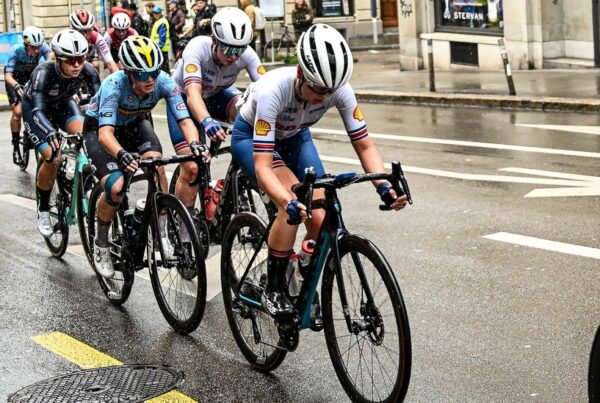Sharing and Segregating: Cycling Safety Through Infrastructure – the views of the ECF and the European Transport Safety Council have just been published.
Cycling can be one of the major contributors to shifting mobility away from polluting and passive modes of transport, towards cleaner, emissions free and active modes of transport in the EU. With the European Commission launching its European Green deal, in a so-called “man on the moon” moment, at the end of last year, now is the time for ambitious support for cycling as a primary force within European policy making, pushing for a modal shift to achieve climate neutrality by 2050. However, there is a big barrier to increasing cycling and getting more people to use their bikes: road safety. For example, ECF’s colleagues over at European Transport Safety Council published last week a report on cycling and pedestrian safety, with some provocative figures.
Cyclist fatalities falling Eight Times slower than deaths of vehicle occupants
Cyclist fatalities have been decreasing eight times more slowly than deaths of motor vehicle occupants. Specifically, while cyclist fatalities have decreased by only 0.4 % between 2010-2018, motor vehicle occupant fatalities have decreased by around 20 %.
In the opinion of ECF, one of the chief causes of the lack of progress towards fatality reductions is an inadequate focus on the needs of cyclists on the roads. In fact, the report also states that an enormous 83 % of cyclist deaths recorded in the European Union are a consequence of an impact with a motor vehicle.
Some excellent examples of how to keep cyclists safe when either mixing with or being separated from motor vehicle traffic can be found in the SCAP Best Practice Guide. The document collates practices regarding infrastructure design, road rules, and road user behaviour in the Netherlands and Denmark, two countries which have decades of experience providing for cyclists.
Segregated cycling lane in Njimegen, Netherlands – Photo: ECF
The guide walks through how the Danes and Dutch provide requirements for understanding the needs of cyclists. In particular it looks at: when and how to separate cyclists from motorised traffic; how to organise priority on the roads; roundabouts and junctions; lighting and traffic light programming; shared space concepts and much more.
Both the Netherlands and Denmark see segregation as a major tool for keeping cyclists safe from crashes with motor vehicles. For them the key seems to be that segregation is necessary when speeds are high (50 km/h or higher) and/or where there is high motor vehicle traffic volume. Distributor roads and major, direct roads should have full traffic segregation, while minor roads do not necessarily require full segregation, as long as speeds and traffic volume are low, along with good roadside visibility and traffic calming measures.
Although in Denmark and the Netherlands the default speed limit is 50 km/h in cities, cycling organisations (particularly ECF’s members, the Danish Cyclists’ Federation and the Dutch Cyclists’ Union) are pushing for more streets to be limited to 30 km/h, when segregated infrastructure is not possible.

These 30km/h zones are in line with the current thinking on designing Shared Spaces for our urban areas. Shared spaces are supposed to be a true balance of different transport modes; by keeping speed limits low (even slower than the 30km/h recommended elsewhere) and ensuring drivers are acutely aware they do not have priority over other road users. The idea is that these areas not only democratise space, but lead to much more pleasant, lively and safe city centres. They represent a relatively new way of thinking, and an interesting development. Time will tell if they are successful across all European countries.
The Danes and Dutch argue that safer cycling infrastructure, whether by building segregated lanes and better junctions, moderating speed limits on mixed-use roads, or through various other methods, is one of the best ways to encourage citizens to take up cycling and, most crucially, to save lives. It is about not only reducing the actual risk but reducing the perceived safety risks of cycling to incentivise people to move away from polluting forms of transport towards more sustainable, safe and active modes. For more ideas/policy measures that should be adopted to encourage cycling, take a look at the SCAP best Practice Guide, the work of ECF, or our member in your country.
Source link








